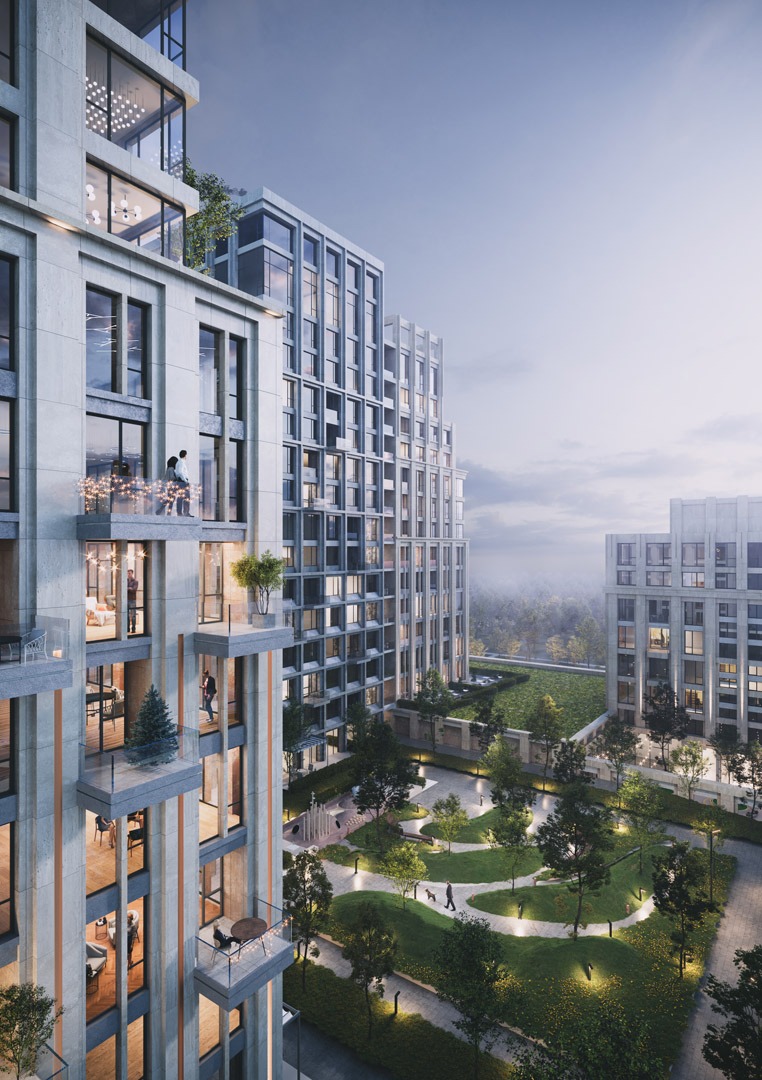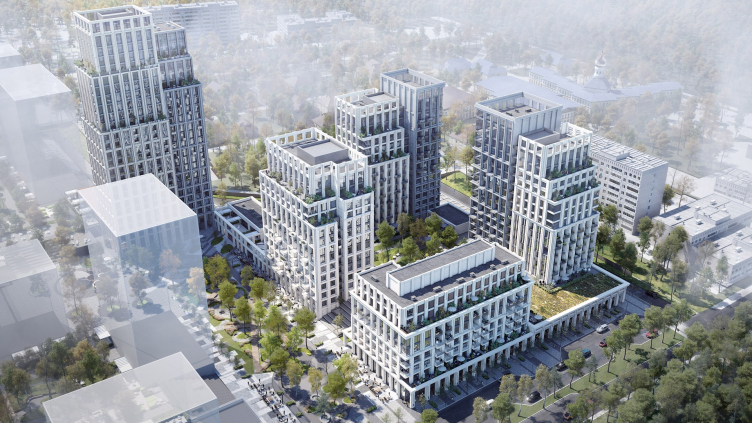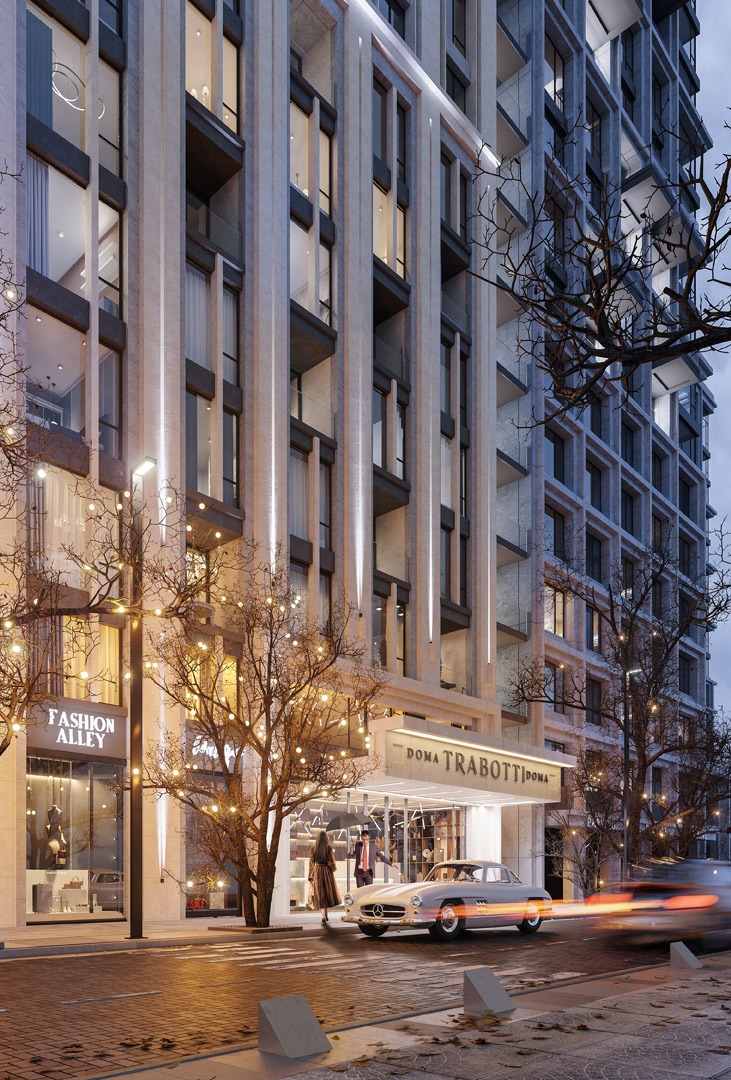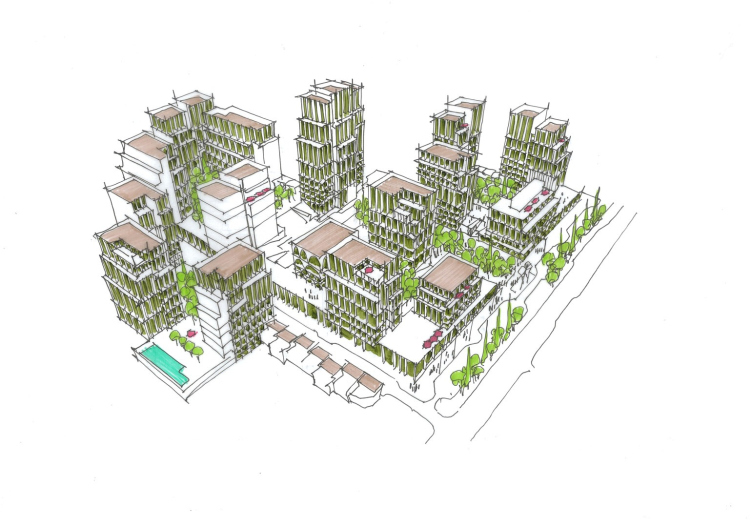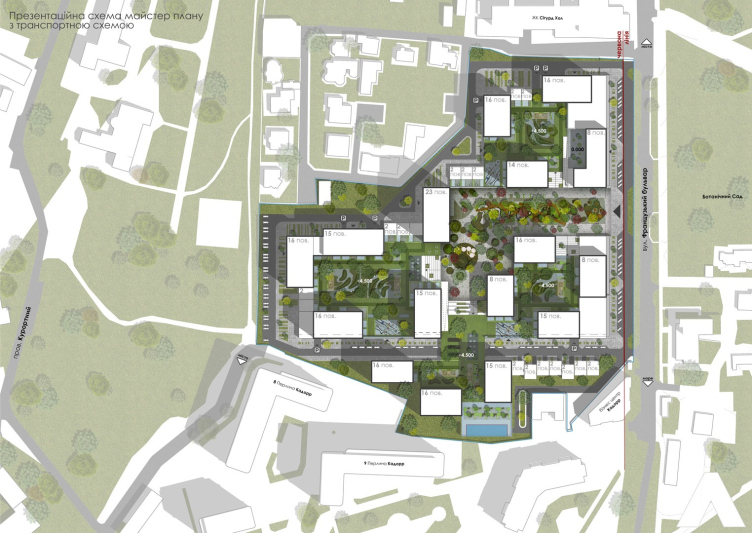“Doma Trabotti” overlooks the French Boulevard, named so back in 1902 in honor of the visit of Emperor Nicholas II to France. In the 1870s, not far from this site there was a brick factory founded by an enterprising Odessa resident Alfred Trabotti – hence the name of the complex. Across the boulevard, there is the Botanical Garden, from which the sea is just a step away. From the sides, the complex is flanked by a few residential multistory “Pearls”, the business center “Kadorr”, and a small sector with private cottages.
Doma Trabotti
Copyright: © Archimatika
Archimatika was approached by the client with a ready project that needed to be revised, as well as with an expectation to get architecture in the classical style, which sells well in Odessa. As we know, Archimatika works in a different aesthetic field, but the architects and the client managed to find another point of contact – the New York Art Deco, popular in our time of residential construction, which makes it possible to emphasize the status of residents in an clear way, at the same time avoiding excessive decor and excessively retrospective character.
The entrance group. Doma Trabotti
Copyright: © Archimatika
From the predecessor project, Archimatika got two 8-story sections on the French Boulevard, whose construction had already begun. They decided to preserve their volumes, only changing the facades; otherwise the architects radically revised the master plan of the complex.
The architects took the sea as a starting point, placing the buildings in such a way as to provide as many apartments as possible with beautiful views from the windows. The buildings are gradually gaining height from 8 floors on French Boulevard to 15-16 on the far line of the site, with a highlight 23-story tower located along the axis of the inner promenade. To enhance the effect of the amphitheater, each building is terraced, which is why the increase occurs not in increments but more smoothly.
Yet another peculiar feature of the complex is the presence of two-story townhouses, placed upon the stylobate (!) right next to the high-rises. It must be said that this volumetric and compositional solution has long been present in Archimatika’s “collection of ideas”, and the architects are happy that the typological experiment will be implemented in this Odessa project.
Doma Trabotti
Copyright: © Archimatika
Still another factor that influenced the master plan was the trees, which were abundant on the site – a significant part of them were preserved and included in the land improvement. As a result, 16 multi-story buildings and 14 townhouses form a composition of three urban blocks and a slightly more isolated group located on the other side of the designed passage. The territories are connected by an inner pedestrian boulevard.
Doma Trabotti
Copyright: © Archimatika
In addition to quiet private courtyards, protected from the outside world by the height of the stylobate, a full-fledged city space will appear on the territory of Doma Trabotti, which should partially stop the gap in the district’s infrastructure. In the central part of the inner promenade, which will stretch across the entire complex, there will be not only shops and cafes, but also a city square, a playground area with splashing pools, a mini-golf course and an amphitheater in the quieter part. On the side of the already built “Pearls”, there will be a spa area with an outdoor pool, connected to the promenade by a green pedestrian bridge – it will also allow you to get to the first level of the stylobate gallery.
The spacious courtyards are just as attractive: artificial hills, mature trees and perennial grass help create a cozy, quiet space that even the fire lanes cannot spoil – they are partially integrated into the green areas. The courtyard invites you to spend more time outdoors: for children, there are safe playgrounds and places for spontaneous play, for adults, there are outdoor sofas and tables, and viewing galleries from where you can watch the life of the boulevard. For the same purpose, the architects provided each apartment with balconies or terraces.
Doma Trabotti
Copyright: © Archimatika
As for the New York Art Deco, about which Archimatika knows a thing or two, Trabotti Houses presents a rather restrained version of it. The inevitable attributes include natural stone decoration, brass inserts, and ascetic geometric décor. The main effort, however, was invested into sculpting a sophisticated stepping silhouette and proportioning the tiers of buildings, which differ from each other by the façade mesh, the presence or absence of minimalistic balconies, pergolas, and terraces.
In Odessa, Archimatika works with a typology that is new for the company, but as always remains true to its principles and solves problems that go beyond the interests of the client. Not only does Doma Trabotti complex stand out against its neighbors in terms of image and land improvement, which is intended to promote more active sales, but also adds two active streets and scenario-rich public space to the area. In addition, the architects do not forget to take advantage of the opportunities that the local climate opens up and, in general, set a new benchmark for the further development of Arcadia.

